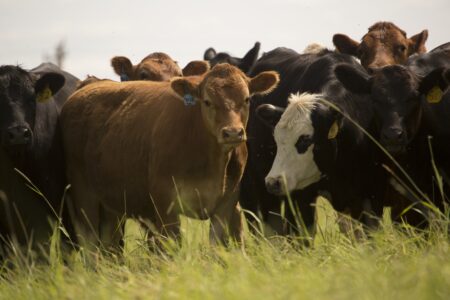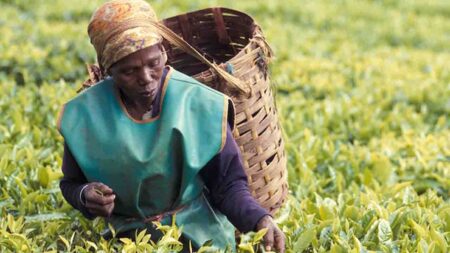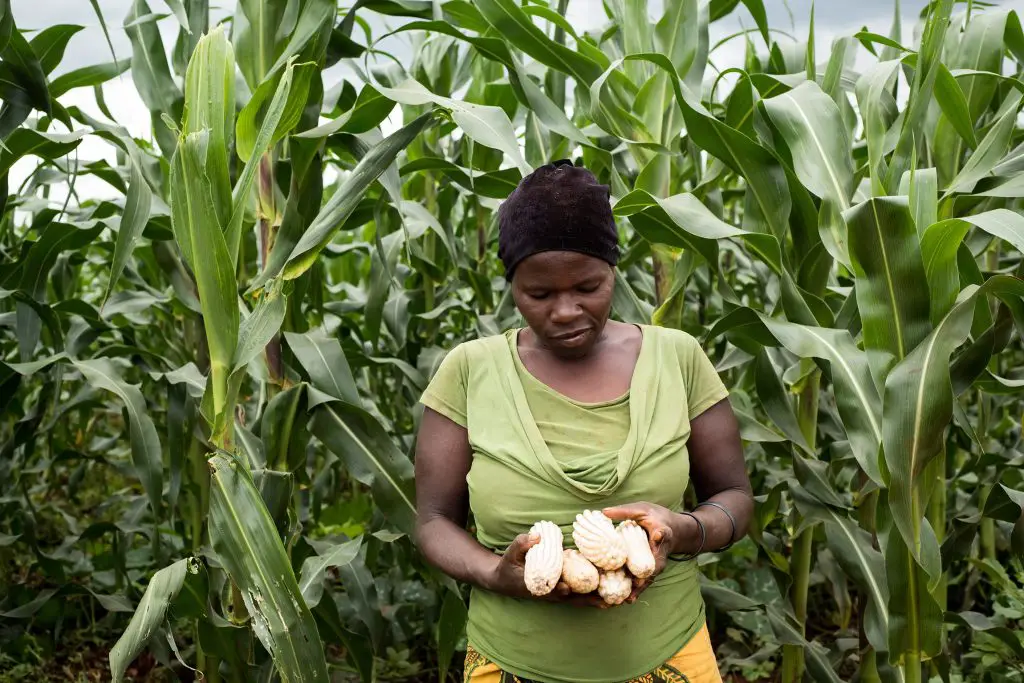- Africa’s new dawn: the rising role of digital and AI in agriculture
- Can Dangote Refinery Transform Africa Energy Ambition
- Gallup Survey: 80 per cent of Kenyan Workers Are Disengaged and Seek New Opportunities
- Madagascar Man Freed from 5KG Tumor After 15-Year Struggle
- How women in Africa are perceived and treated
- Sugar consumption in Kenya to Increase to 1.23 Million Tonnes
- Can Somalia and Turkey Oil deal Bring Change in Somaliland
- Remittances to Kenya dropped to $371.6 million in June, marking a six month low
Browsing: agriculture in Tanzania
- Tanzania, a country with a total area of 947,300 km², is home to Africa’s second-largest cattle herd.
- Meat exports constitute about 7.1 percent of the East African country’s GDP.
- With eyes on higher revenues, Tanzania aims to produce 10,000 tonnes of meat annually by 2025.
With a big herd and stakes high in the international food markets, Tanzania has set her eyes on ambitious plan of shipping 10,000 tonnes of meat exports annually by 2025. Whereas Tanzania is home to Africa’s second-largest cattle herd, the country has been punching below its weight.
Currently, Tanzania is not one of the top meat and milk producers in the continent. The country’s situation syncs with FAO’s observation that there is no correlation between the size of cattle herds a country owns to its beef exports.
Relation between cattle herds and meat exports
In terms of the size of livestock in Africa, the Food …
- The project, launched in 2022, cuts across multiple services offering farmers a cushion to be stable and profitable.
- The project aims to support over 300,000 farmers in 2023 with the partnership.
- At least $140 million of loss is faced by Tanzania due to drought annually.
Ground-breaking crop insurance has been introduced in Tanzania to cover crop loss and safeguard farmer earnings. The crop insurance was introduced by a fertilizer manufacturing company, Yara Tanzania, in collaboration with Jubilee Insurance.
The transformative solution dubbed ‘AfricaConnect’, leverages technology to offer farming solutions as farmers in Africa grapple with the challenges of climate change.
The project, launched in 2022, cuts across multiple services offering farmers a cushion to be stable and profitable.
According to Yara Tanzania, Managing Director, Winstone Odhiambo, AfricaConnect has enrolled at least 83,000 so far, accessing crucial funding solutions, high-quality and dependable fertilizer, extension services, and a ready market for their …
Tanzania is building irrigation schemes for rice production and encourages efficient use of fertilizers via its 10-year National Rice Development Strategy Phase II (NRDS-II). “The NRDS-II purpose is to double the area under rice cultivation from 1.1 to 2.2 million hectares from 2018 to 2030, double on-farm rice productivity from two t/ha to four t/ha by 2030, and reduce post-harvest loss from 30 per cent to 10 per cent by 2030,” according to ITA.
The exportation of goods is a numbers game. Numbers give a unique perspective on the trend of agro-product exportation across potential and competitive markets in the region and abroad.
ITA shows that the exportation of corn has faced setbacks in the financial year 2021/2022 as forecasted to decrease by 20 per cent, equivalent to 80 million metric tonnes, due to the COVID-19 pandemic disrupting supply chains. The decrease is attributed to reports of truck drivers’ screenings, …
President Suluhu Hassan has welcomed American investors in her bid to “set the tone for creating the safe lending for investors”.
By 2021, Tanzania led in East Africa in the number of FDI attracted from the US to Tanzania, followed by Kenya and Uganda.
Over the past years, there was deterioration in Tanzania’s business and investment sector that marred the nation’s attractiveness.
The latter brought Tanzania to rank 141 out of 190 countries on the 2020 World Bank Ease of Doing Business Report, which the International Trade Administration argued to be the lowest among the nation’s peers.
Hence, President Suluhu Hassan’s administration is addressing the latter. Her government has now substantially improved cross border trading with its neighbouring nations, dealing with unrealistic taxes, unnecessary bureaucracy, delayed refunds and unfriendly administration of taxes.…
Detailing on the source of the funding and its uses, the president said the US$100 million (over TShs230 billion) is from the International Monetary Fund (IMF) as a loan to Tanzania, and another US$100 million is for the Isles.
“The IMF fund will be directed to health, education, water and power sectors, as well as economically empowering wananchi (citizens/the public),” local media quoted President Mwinyi.
The president went ahead and gave a very detailed explanation of the planned use of the funding detailing each sector and the allocated amount and then he got to the part about funding to support businesses.…
Tanzania’s Ministry of Agriculture has begun cementing its foothold on horticulture activities across Tanzania.
The ministry has just concluded a meeting with horticultural farmers and products exporters, to address taxing and policy drawbacks related to the sub-sector.
The meeting catapulted rather vital issues for the development of the sector, particularly converging Tanzania Ports Authority (TPA) and Tanzania Revenue Authority (TRA) players, but also, gave a path to the possibility of ushering a three-year plan that will be associated with a special managing body.
According to the ministry, the meeting attracted vital players from crucial ministries, including—finance and planning, industry and trade, ports authority and farmers.
Speaking at the meeting, the Deputy Ministry of Agriculture, Hussein Bashe, stressed that the meeting root agenda was to highlight various challenges affecting the sub-sector and respective measures to address them.
Per Tanzania’s National Bureau of Statistics, second-quarter report—the agricultural sector growth rate stood at …
The cashew nut season has just kicked off in Tanzania and the cash crop prospects are considerably getting richer, not only due to past learned experience but also, the strategy put in place by the Tanzanian Ministry of Agriculture.
Cashew nut has been the most foreign currency high earning crop in Tanzania. Available data from the Ministry of Agriculture, show that cashew nut generated over $ 565 million in the previous season 2017/2018, exceeding contributions garnered from cotton, coffee, and minerals.
Tanzania is one of the vital producers of cashew nut in East Africa and the rest of the continent at large, alongside Guinea-Bissau, Nigeria, Kenya and Ivory Coast.
Further, according to a report by Fresh From Kenya, on cashew nut industry overview in Africa (2018), indicated that: in 2011, Tanzania scored 8th position on the global scale and 4th in the continent on cashew nut production output, …
Farmers in Tanzania can now access cheaper fertilizer for farm-production as Ministry of Agriculture reduces fertilizer costs.
In a press conference, on August 28th, the sector Minister Hon. Japhet Hasunga, highlighted the Tanzanian Bulk Procurement System (BPS) which he said operates on a competitive basis, said that the adjustment of the prices formula serves farmers’ interests.
Currently, fertilizer pricing will be based on a different formula, triggered by 12 percent decrease of Di-Ammonium Phosphate (DAP) fertilizer (a favorable input in maize production in Tanzania) to the source, the government also revised pricing formulas within farming year 2017/2018 and 2019/2020 respectively.
Across regions in Tanzania, 3.4 to $ 4 are the prices per 50 kg DAP-fertilizer bag, equivalent to 13 to 17 percent decrease. A 25kg fertilizer bag is now selling at $2.17 to $2.61 equal to 14 to 19 percent decrease respectively.
A 15 DAP fertilizer bag is …









